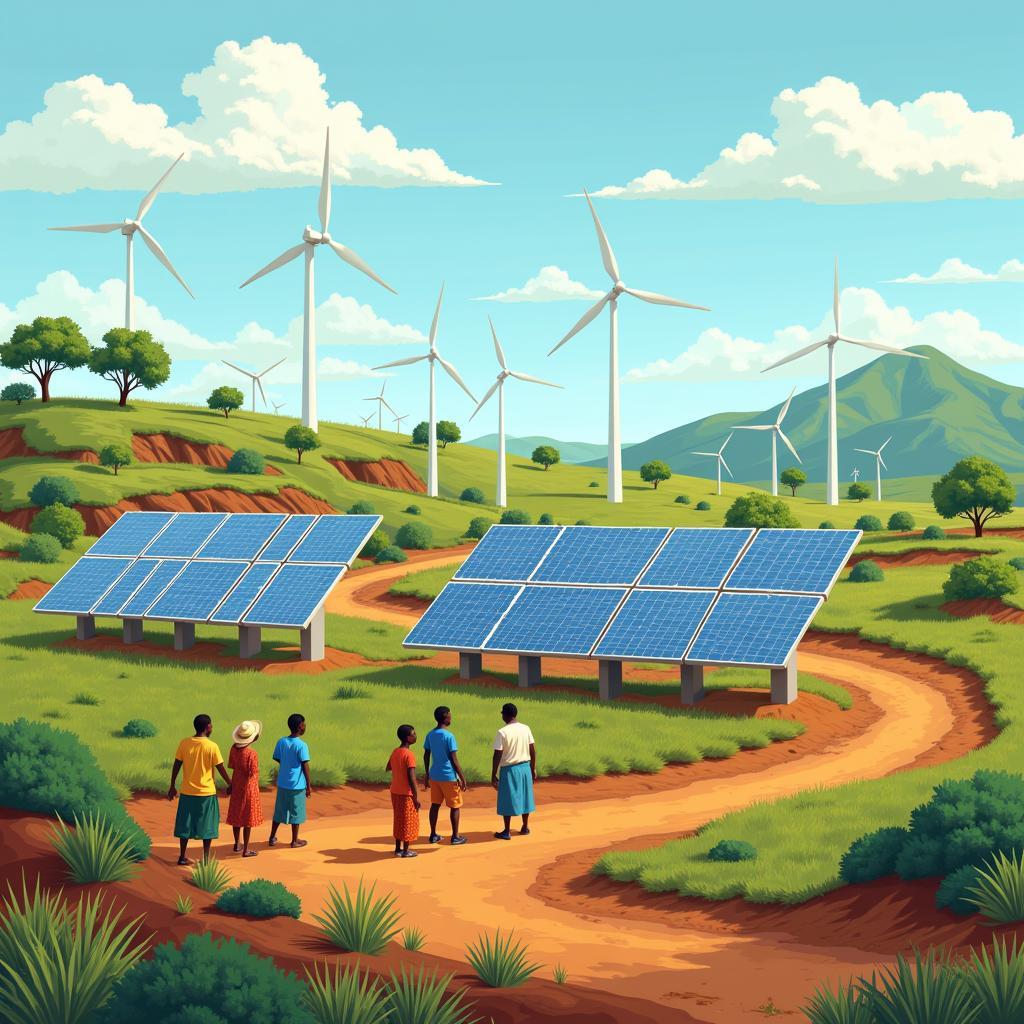Exploring African Heat: A Journey Through Climate, Culture, and Cuisine
African Heat is more than just a temperature reading; it’s a vibrant force that shapes the continent’s diverse landscapes, cultures, and lifestyles. From the scorching Sahara Desert to the humid rainforests of the Congo Basin, understanding African heat means delving into the complexities of climate, adaptation, and the rich tapestry of life that thrives under its influence. This exploration goes beyond the meteorological, encompassing the cultural dynamism, the spicy flavors of African cuisine, and the passionate rhythms that pulse through the continent.
African music often reflects the environment and the daily struggles and joys of life, including the heat. You can listen to some curated playlists on platforms like Spotify. See African Heat Spotify for some curated playlists.
The Science Behind African Heat
What causes the intense heat experienced in many parts of Africa? A combination of geographical factors, atmospheric circulation patterns, and solar radiation contribute to the continent’s varied climates. The Sahara Desert, the world’s largest hot desert, experiences extreme temperature fluctuations due to its location and lack of cloud cover, while the equatorial regions experience consistent high temperatures and humidity due to their proximity to the equator. Understanding these variations is crucial to appreciating the diverse ecosystems and the ingenious ways in which humans and wildlife have adapted to survive and thrive in these conditions.
Adapting to the Heat: Nature’s Ingenuity
From the water-storing adaptations of desert plants to the nocturnal behavior of many animals, African wildlife has evolved remarkable strategies to cope with the heat. Human societies too have developed unique architectural styles, clothing choices, and cultural practices to mitigate the effects of high temperatures. For instance, traditional building materials and designs often prioritize ventilation and shade, while loose, flowing garments are common in many regions. These adaptations are not merely practical; they are woven into the fabric of African life, reflecting the deep connection between people and their environment.
African Heat in Culture and Cuisine
African heat isn’t confined to the weather. It also manifests in the vibrant cultures and the fiery spices that characterize the continent’s cuisine. From the energetic rhythms of West African drumming to the intricate beadwork of the Maasai, African art and music often reflect the energy and passion born from the heat. Similarly, African cuisine is known for its bold flavors, often incorporating chili peppers and other spices that add a “kick” to dishes. Think of the fiery jollof rice of West Africa, the spicy piri-piri chicken of Mozambique, or the rich, flavorful stews of Ethiopia. This culinary heat adds another dimension to the experience of African life, tantalizing the taste buds and reflecting the cultural diversity of the continent.
Are you interested in exploring the world of African chili? African Eye Chilli offers insights into this specific type of pepper.
The Rhythm of Heat: Music and Dance
The pulsating rhythms of African music often mirror the intensity of the sun and the energy of life on the continent. From the complex polyrhythms of traditional drumming to the contemporary sounds of Afrobeat and Highlife, music is an integral part of African culture. Dance, often intertwined with music, provides another outlet for expressing the vibrancy and passion that characterize African Life. These art forms are not just entertainment; they are powerful forms of communication, storytelling, and cultural expression, often reflecting the challenges and triumphs of living in a hot climate.
You can find more resources about contemporary African music online. Explore African Heat Stacy Valentine for information on a specific artist.
The Future of African Heat
As the world grapples with climate change, the challenges posed by African heat are becoming increasingly significant. Understanding the complex interplay between climate, environment, and human activity is crucial to developing sustainable solutions for the future. From promoting renewable energy sources to developing climate-resilient agricultural practices, African nations are at the forefront of finding innovative ways to adapt to and mitigate the effects of climate change. These efforts not only address environmental concerns but also contribute to economic growth and social development, paving the way for a more sustainable and prosperous future. The African kids face many challenges, and some might be cheated with promises of European transfers. Read more at African kids cheated in the name of European transfers.
 Solar panels and wind turbines in the African landscape
Solar panels and wind turbines in the African landscape
Conclusion
African heat is a powerful and defining characteristic of the continent. From the scientific intricacies of its climate to the vibrant expressions of its cultures and cuisines, African heat shapes life in myriad ways. Understanding and appreciating this multifaceted phenomenon is key to appreciating the resilience, ingenuity, and rich tapestry of life that thrives across this diverse continent. As we move forward, addressing the challenges and opportunities presented by African heat will be crucial for ensuring a sustainable and prosperous future for all.
FAQ
- What is the hottest temperature ever recorded in Africa?
- How do desert animals survive the extreme heat?
- What are some traditional African methods of cooling homes?
- What are some popular spicy African dishes?
- How does climate change affect African heat?
- What are some examples of African music and dance that reflect the heat?
- What are some sustainable solutions for addressing the challenges of African heat?
Situations:
- Planning a trip to Africa: You’re researching the best time to visit specific regions and want to understand the typical temperatures and weather patterns.
- Studying African ecosystems: You’re interested in learning about how plants and animals have adapted to survive in hot climates.
- Exploring African culture: You want to understand how heat influences cultural practices, clothing styles, and culinary traditions.
- Researching climate change: You’re investigating the impact of rising temperatures on African communities and ecosystems.
- Developing sustainable solutions: You’re seeking innovative ways to mitigate the effects of heat and promote sustainable development in Africa.
Suggested Readings:
- A History of African American Theatre PDF provides insights into cultural expressions.
Contact Us
For further assistance, please contact us:
- Phone: +255768904061
- Email: [email protected]
- Address: Mbarali DC Mawindi, Kangaga, Tanzania
Our customer service team is available 24/7.



